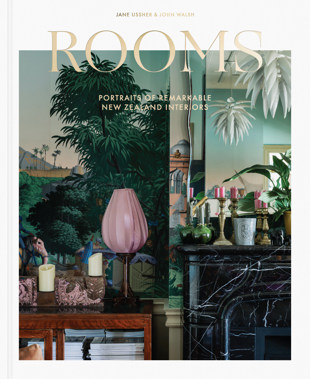Q1: This is a major project. How long did it take?
About two years actually taking the photographs but the idea behind the book has been developing a lot longer because photographing spaces and rooms are something of an obsession of mine. Planning for the trips was complicated by the resurgence of Covid but the time away from the camera allowed me to clarify what I wanted to include in the book so in some ways it was advantageous. The two major Auckland lockdowns meant we couldn’t get out of town to shoot and later on, when the borders were open, we didn’t want to create anxiety for homeowners by being visitors from Auckland into parts of the country with low Covid numbers. Suffice to say that we were really under the pump at deadline time!
Q2: How on earth did you get people to agree to having their rooms photographed?
I think trust played a major role. Amazingly, almost no one said no. The fact that we were offering anonymity to people whose homes had never been published before certainly helped, but I also think that they were curious to see what the photographs would say about their space. In some cases taking the photographs was a very collaborative process, with the owners contributing ideas or helping create a better composition by moving things while in other instances the owners were happy to give me free reign.
Q3: How long would you typically spend in each room?
It varied, obviously, but it was at least a couple of hours and sometimes a day or more. Sometimes I went back. As I drove away from Loudon Farm on Banks Peninsula, for example, I wasn’t convinced that I hadn’t done the house justice so I returned the next day. Typically I would spend at least the first hour taking in my surroundings before committing to a shot, setting up my camera and tripod and start taking photographs.
Q4:If there’s one thing this book is not it’s minimalist.
Correct, though within the book there are many quiet spaces. What I think this book show cases is people’s interest in creating rooms that reflect their individuality without fear, which is exciting. These are the rooms of people who collect but with huge intelligence and restraint so the rooms don’t feel decorated as such but rather curated.
Q5: Colour is the book’s other notable feature.
Yes, all the owners seemed confident with their choices of colour or in some cases the complete lack thereof, the empty spaces that allowed the art to be the feature. These aren’t spaces where the owners follow trends and in many cases their collections of art, sculpture and furniture helped define the colour of the rooms.
Q6: There’s a common theme to the Christchurch rooms: the earthquake.
Indeed. Every home we went into had had some sort of damage, and in some cases it had been major. Two had had to be pulled down and new houses built. In the Governors Bay house, which we visited in February this year, the scaffolding had only just come down and the builders had only just left. It is hard to imagine the stress of a rebuild dragging on that long. But we encountered an incredible resilience and positivity among the Christchurch home owners.
Q7: Are there any rooms that especially linger in your memory?
I think I admired them all. I was amazed by the variety and appreciated each room on its own merits.
Q8: In what way did working on this book push you as a photographer?
It used all the skills that over many years as a photographer I’ve fine-tuned: light, space, composition and engaging with the subject matter. Gaining people’s trust was also hugely important and with that came the responsibility of creating images that these very discerning home owners would find acceptable. It’s so anxiety-producing but that is when I push myself the hardest.
Q9: Proud of it?
Absolutely!
Q10: What do you hope readers will take from this book?
I’m hoping that they will be as amazed and delighted as I am by the scope and brilliance of these extraordinary rooms, spaces and collections.


